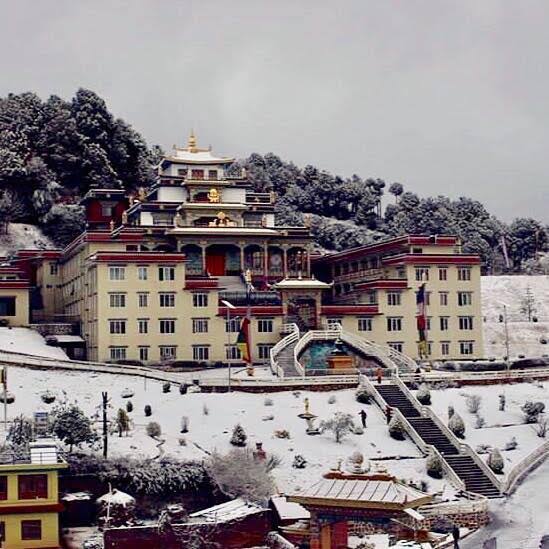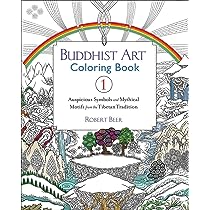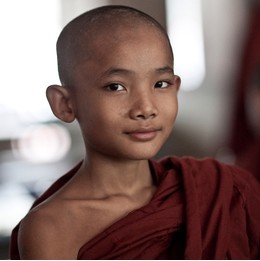LEVEL: Tibet

7 Years in Tibet, Brad Pitt
- SET - 3D WORLD - TIBET, travel, culture, costume, food, people, music, language, mountains, monasteries, Lamas
Dr Strange, 2nd visit
1st visit, Tourist, unawakened, bringing their mental map, have a viewpoint, blind, asleep, meet the master but don't recognize, master plays the fool, gets drunk, they reject the master, he also sees they are not ready.
Snowy Mountains (Buddhist Lama)
Tipikata
Tenjur
Kanjur
Mt Kailash,
Nepal, Mustang, Buddha
China
Mt Kailash, sherpas, Master on the Snowy Mountain
Bon, Lamas, Hidden Retreats, Masters, Himalayan Mountains, Yeti, Ancient peoples, Inner earth, Time/Space Distortion Fields, Portals
Lord of the Rings, Gandalf
China - TCM, Tibetan Medicine, cooking, Shaolin kung fu
Tibetan Master

Shangrila
Sacred Mountains, Natural Caves
Agartha, Mt Kailash
Little Monk - Curious George, Siddhis
Journey to the Center of the Earth,
Inner Earth
Lord of the Rings
Mt Kailash, Mt Shasta, Himalayas, Gobi Desert
Exploring & mapping secret tunnels
Secret entrance to inner earth, guarded by magical Giants, Big Foot, advanced races
Master on the Snowy Mountain
The boy scouts & girl scouts come to visit, show woodcrafts
Climbing mounains, K2 or Everest, Sherpas
Hiking gear, back-pack
Survivalism, preparedness
The campsite, setting up their tents
Cooking around the campfire
Singing Camp songs, teacher plays guitar
Night Time in the Tent, a long, scary night, as they hear a big animal walking around, and then are too afraid to sleep
Night Animals
plant a tree, save the forest
called out to fight a forest fire
MEET THE MASTER, magic powers, teachings
Journey to the Center of the Earth (1864) Summary: Professor Lidenbrock, his nephew Axel, and their guide Hans explore a subterranean world beneath the Earth's surface, encountering prehistoric creatures and breathtaking landscapes. It’s a thrilling mix of geology, paleontology, and pure imagination. The girls get lost exploring a large cave. They walk and walk, going down deep into the earth. After several days, being so hungry, they come out into a strange world beneath the surface
Giant trolls hide in the cave, and the girls make friends with a baby troll, bringing her healthy apples and cherry tomatoes, becuase baby trolls love hthe color red. The girls are archeologists, and are Hunting for ancient pottery in the cave, and they find human remains. Daddy Troll says not to disturb the bones, as the spirits are at rest.
The Cave of Visions - In a hidden cave, seekers meditated to receive divine visions. Each visitor faced their fears, seeing illusions reflecting their inner turmoil. Only those who embraced their vulnerabilities emerged with wisdom. The story teaches self-acceptance as key to enlightenment. There is a river leading down into the earth in the back of the cave, Underground Lake of Reflections, A lake mirrored not just appearances but inner truths. Travelers saw their past actions, inspiring repentance and transformation. One greedy merchant saw his corrupt ways, returning home to share his wealth. This story emphasizes introspection and the transformative power of self-awareness. The hidden secret object in the rock, A mystical talisman was hidden thousands of years ago, containing wisdom. Only those who sought knowledge, and purified their heart could find it, or even see it. A prince abandoned his desire for power, dedicating his life to learning and service, and the location revealed itself to him in a dream. This tale urges valuing wisdom over material gain.
Lava Tubes - Natural underground formations.
Aliens fly through the magma
Magma, Super-heating, Eruptions, Mega-volcanoes
Volcanoes, Ring of Fire, Plate tectonics, earthquakes
Metamorphic Rocks, Geology, Rocks
Crystals, copper - Engineering
gems, diamonds, granite, piezoeletric properties, energy, vibration, magnetite
Tibetan Bon Folk Tales
The Ice Palace of the Snow Spirits - Hidden within the Himalayas, an ice palace housed snow spirits who preserved the purity of the highlands. When climbers disturbed the palace for treasures, the spirits unleashed storms. A Bon practitioner appeased them with prayers, teaching respect for sacred lands.
The Bridge of Rainbows - A mystical bridge of rainbows connected the human world to the spiritual realm. Only the pure-hearted could cross to seek blessings from celestial beings. A man, driven by greed, attempted to use the bridge but fell into an abyss. Later, his kind-hearted daughter crossed with offerings and returned with teachings for her community. The story shows the power of virtue and humility in spiritual pursuits. A pilgrim crossed into a shadowy realm where spirits of the lost wandered. Through courage and compassion, he guided the spirits toward the light, freeing them and earning profound teachings. This story represents the power of compassion to heal even the darkest places.
Tibetan Buddhist Schools

- Tripitaka (Pali Canon): Core scriptures of Theravada, including Sutra Pitaka (teachings), Vinaya Pitaka (monastic rules), and Abhidhamma Pitaka (philosophical analysis).
- Mahayana Sutras: Includes Lotus Sutra, Heart Sutra, and Diamond Sutra.
- Tibetan Buddhist Canon: Kangyur (Buddha’s teachings) and Tengyur (commentaries).
Nyingma
- Major Teachers: Padmasambhava (Guru Rinpoche), Shantarakshita, Longchenpa, Jigme Lingpa
- Primary Texts:
- Nyingma Gyubum (collection of tantras and terma texts)
- The Tibetan Book of the Dead (Bardo Thodol)
- Longchenpa’s Seven Treasuries
- Achievement Titles:
- Khenpo/Khenmo: Awarded after ~13 years of intensive study, equivalent to a PhD in Buddhist Studies
- Rinpoche: Honorific for respected teachers or reincarnated lamas
- Tertön: Treasure discoverer of hidden texts (terma)
Kagyu
- Major Teachers: Tilopa, Naropa, Marpa, Milarepa, Gampopa, Karmapa
- Primary Texts:
- Six Yogas of Naropa
- Mahamudra texts (e.g., Gampopa’s Jewel Ornament of Liberation)
- Milarepa’s Songs of Realization
- Achievement Titles:
- Khenpo/Khenmo: Awarded after ~13 years of study, equivalent to a PhD
- Rinpoche: Honorific for lineage holders (e.g., Karmapa, Shamarpa)
- Lama: General title for teachers
Sakya
- Major Teachers: Drogmi, Sakya Pandita, Ngorchen Kunga Zangpo, Sakya Trizin
- Primary Texts:
- Lamdre (Path and Its Fruit)
- Sakya Pandita’s Treasury of Good Advice
- Ngorchen’s Commentaries on Tantric Practices
- Achievement Titles:
- Khenpo/Khenmo: Awarded after ~13 years of study, equivalent to a PhD
- Sakya Trizin: Head of the Sakya school, from the Khön family
- Rinpoche: Honorific for respected teachers
Gelug
- Major Teachers: Je Tsongkhapa, Dalai Lama, Panchen Lama, Ganden Tripa
- Primary Texts:
- Tsongkhapa’s Lamrim Chenmo (Great Treatise on the Stages of the Path)
- Nagarjuna’s Madhyamaka texts
- Panchen Lama’s Meditation Manual
- Achievement Titles:
- Geshe/Geshema: Highest academic degree, ~20 years of study, equivalent to a PhD
- Ganden Tripa: Spiritual head of Gelug school
- Rinpoche: Honorific for respected teachers or reincarnated lamas
Bon
- Major Teachers: Tonpa Shenrab, Lopon Tenzin Namdak, Menri Trizin
- Primary Texts:
- Bon Kangyur (sutra and tantra texts)
- Bon Tengyur (commentaries)
- Dzogchen texts (similar to Nyingma’s Great Perfection)
- Achievement Titles:
- Geshe: Academic degree, similar to Gelug’s, after extensive study
- Rinpoche: Honorific for respected teachers
- Menri Trizin: Spiritual head of Bon tradition
Little Monk
https://www.youtube.com/@CuriousGeorge/videos
The Little Monk - Kokai Tube - Curious George, Finding one's path, self-discovery, independence, spirituality, battle between good and evil.
A little monk, who is left at the Tibetan monastery by his poor family, who say he is surely the reincarnation of a lama, but the boy isn't sure. Maybe they just don't like him, and are trying to get rid of him.
He stays with an advanced teacher, but doesn't appreciate the opportunity he has been given. He likes to play games like any little boy, and gets into trouble almost daily. The teacher has infinite patience, which just annoys the little monk, and he often goes out of his way to try to annoy his teacher.
- story of ferry-boat crossing, banana-eating monks
The writing of a story, entitled 'Little Monk,' is a golden opportunity both to teach as well as to share the blessings of study, leisure time, intelligence, and health while in a body. Some stories are better than others, and some gifts more meaningful and helpful than others. Give the gift of wisdom, love, and compassion. Don't worry about reaching millions of readers. Rather, concentrate on creating the best story line that I'm capable of, and dig deeply into the work of selfless reception, followed by thorough editing and revision (re-vision, seeing again).
One of our characters is a small dragon, about 3 feet tall, green, with small wings. he is naughty, a dark-side but not evil child of Satan. Name? he’s a shape-shifter, from a nude, scaly dragon to a skate-boarder, punk-rock kid, wearing black t-shirts and gold chains. has dragon tattoos on one arm and a goat with horns on his back. thin and muscular, girls swarming around. he’s lead-singer in a punk-rock band.
Opposed to him is a gentle, wise animal, shape-shifts to a master monk from the himalayas, China or Tibet, who does yoga, Tai Chi, and Kung Fu. wears yellow robe, mandala tattoo on back, and his animal on arm.
Not to get too caught up in an indictment of evil forces in the world today, but going beyond their limitations, and if writing a book, then first, think to tell a fine story, full of characterizations, emotions, story lines, and read those works that move you, and inspire you, leaving you hungry for more pages. Not seek sales, nor fame, nor even success, but rather the satisfaction of having lived a life, told a good story, loved others and participated.
Incorporate stories into my work, drawn from the Dhamma about deities, coincidences, signs, rebirth, tulkus, treasure revealers, mandala creation, rituals, costumes, talismans, representational magic, correspondence, angels, ethereal beings, disembodied masters, Dakinis, Hinayana, Mahayana, Vajrayana, Tantra, practices, consciousness transference, the bardo state, near death experiences, tummo, kundalini, bandas, great sitting retreats, isolation tanks, great pyramid, sound chamber initiations, sound and frequency healing, Atlantan and Tartarian civilizations, free energy, crystals, Tonglen, self sacrifice and voluntary suffering for higher purposes.
Write of inspired dreams drawn from sacred texts, with mystic symbols abounding, not shy away from mountains made wholly from piles of bones, or wrathful goddesses wearing a chain of human skulls as a bracelet. Death is not to be feared, but rather recognized as an integral part of human life, limiting our time, thus refining our priorities, and organizing our brief journey, defining our place among the heavens.
Curious George (Diary of a Wimpy Kid)
The story opens with George, a little orphaned chimpanzee (referred to as a "monkey"), in the jungle of Africa. A Man with a Yellow Hat observes him through his binoculars and decides to bring the monkey home with him. (KING KONG) He puts his hat on the ground and hides behind a tree. George, ever curious, comes down from the tree. He puts the hat on but it is so large that he cannot see and this gives The Man In The Yellow Hat the chance to capture him and put him in a bag. The man takes George in a rowboat to his cruise ship where he tells George that he is taking him to a zoo in a big city and that he will like it there. He then gives George the run of the ship and tells him not to get into trouble. On deck, George sees some birds, tries to fly, and falls overboard. The crew notices that George is missing, and spot him in the Atlantic Ocean. They throw him a lifesaver and pull him aboard.
When they arrive in America, George says goodbye to the sailors, and is then taken to the man's house, where he has a meal, smokes a pipe, and then goes to bed. The next day, after seeing the man make a telephone call to the zoo before leaving, George decides to try the telephone himself. He plays with the telephone until he inadvertently calls the fire station and sets off a false fire alarm. The firefighters (who hear the call and the alarm) are unaware that it is George. Then they look at a signal screen (revealing a map) and the location highlights where the telephone call had come from. As a result, they think it is a real fire. They get into their fire trucks quickly but when they rush to the house all they find is no fire but a monkey (which is George). A thin firefighter caught one arm and the fat one caught the other. They arrest him for the false alarm. They tell George that since he fooled the fire department, they will have to shut him in a prison where he cannot do any more harm.
George wanted to get out so he climbed up to the window to try the bars. At that moment, a watchman comes in and climbs on a wooden bed to catch George. The watchman, however, is heavy that the bed tips over and pins him against the wall, thus stalling him. This buys George enough time to run out the open door. After escaping, he spots a balloon vendor out in the street and tries to grab a balloon but ends up grabbing the entire bunch and gets sent flying off into the air. Down below, the houses and people look like toy houses and dolls, respectively. George is carried by the breeze until it fades out, leaving George on top of a traffic signal, which mixes up traffic. The man with the yellow hat finds him there, buys all the balloons from the street vendor, and finally takes George to his new home at the zoo, where each animal gets its own balloon.
Curious George Takes a Job (1947)
George is living in the zoo, until he gets a key from a zookeeper and escapes his cage. In the city, George enters a restaurant where he is caught in the kitchen eating a pot of spaghetti and forced by the cook to wash the dishes, but he does a splendid job. As a reward, the cook takes him to meet an elevator man, who gives him a job as a window washer for a tall apartment building. As George works, he observes many people in the different windows, such as a boy refusing to eat spinach and a man sleeping. Once he reaches the final window, he notices there is a room behind the window being painted. George lets curiosity get to him again, he enters the apartment just as the painters leave for lunch and decides to paint it for them.
An hour later, the painters return and see that George has given the room a jungle theme, including painting the furniture coverings as animals. Furious, the painters, the elevator man, and the lady owning the apartment chase him out of the room and down a fire escape, followed by the other tenants. Afterwards, George is taken to a movie studio to film a movie about his life, which he and all of the townsfolk he met later come to watch in the theater.




